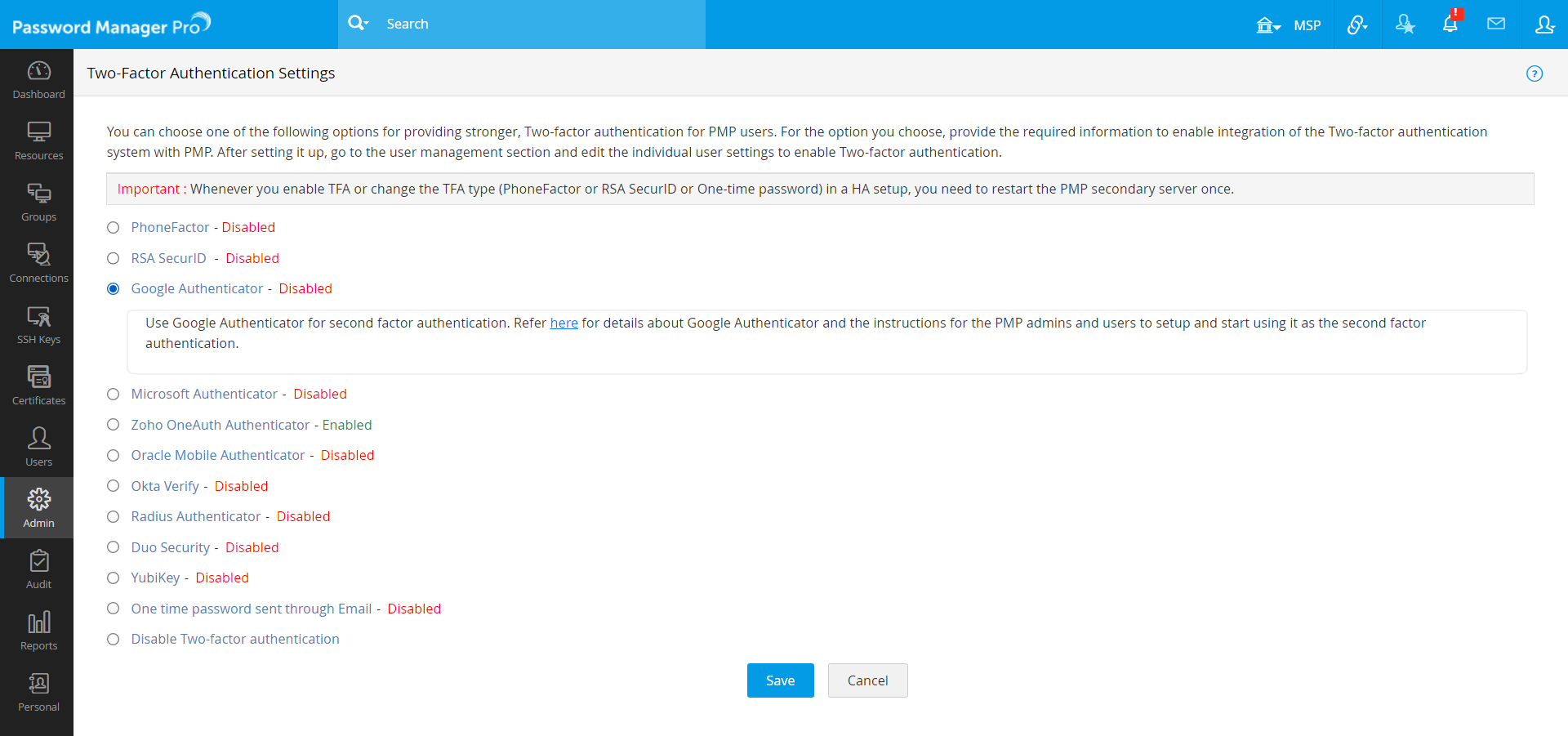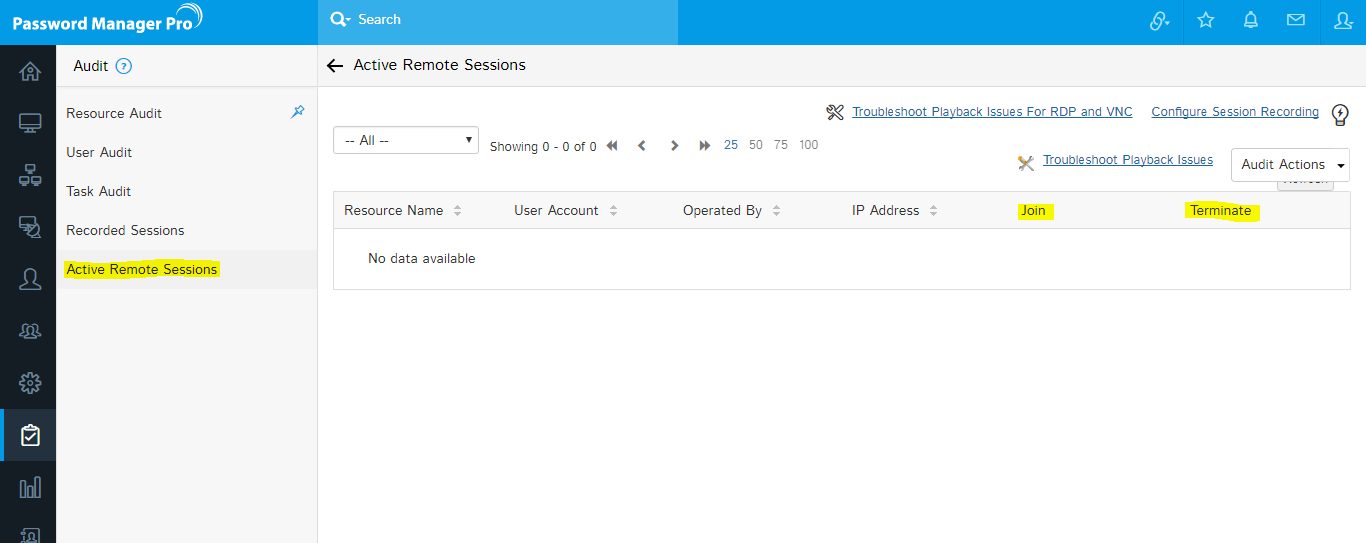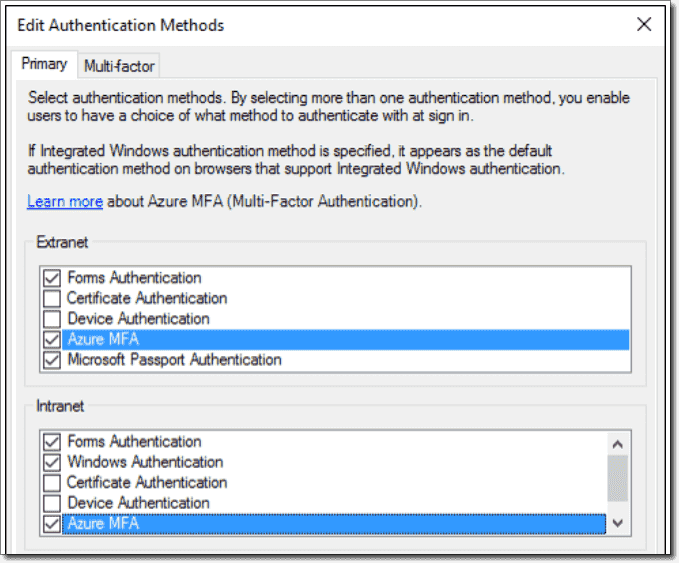
- #Password manager pro active directory authentication update#
- #Password manager pro active directory authentication code#
- #Password manager pro active directory authentication password#
- #Password manager pro active directory authentication windows#
#Password manager pro active directory authentication password#
Features like Azure password protection or Azure AD Multi-Factor Authentication help improve security, but a username and password remains a weak form of authentication that can be exposed or brute-force attacked. The end-goal for many environments is to remove the use of passwords as part of sign-in events. This hybrid approach makes sure that no matter how or where a user changes their credentials, you enforce the use of strong passwords. A component installed in the on-prem environment receives the global banned password list and custom password protection policies from Azure AD, and domain controllers use them to process password change events. These policies can use filters to block any variation of a password containing a name such as Contoso or a location like London, for example.įor hybrid security, you can integrate Azure AD password protection with an on-premises Active Directory environment. To increase security, you can define custom password protection policies. If an Azure AD user tries to set their password to one of these weak passwords, they receive a notification to choose a more secure password. A global banned password list is automatically updated and enforced that includes known weak passwords. Password protectionīy default, Azure AD blocks weak passwords such as Password1. Azure AD Multi-Factor Authentication can also be required when users perform a self-service password reset to further secure that process. Administrators can define what forms of secondary authentication can be used. Users can register themselves for both self-service password reset and Azure AD Multi-Factor Authentication in one step to simplify the on-boarding experience. Something you are - biometrics like a fingerprint or face scan.Something you have, such as a trusted device that is not easily duplicated, like a phone or hardware key.Something you know, typically a password.If the password is weak or has been exposed elsewhere, is it really the user signing in with the username and password, or is it an attacker? When you require a second form of authentication, security is increased as this additional factor isn't something that's easy for an attacker to obtain or duplicate.Īzure AD Multi-Factor Authentication works by requiring two or more of the following authentication methods: If you only use a password to authenticate a user, it leaves an insecure vector for attack.

#Password manager pro active directory authentication code#
Multi-factor authentication is a process where a user is prompted during the sign-in process for an additional form of identification, such as to enter a code on their cellphone or to provide a fingerprint scan. Password writeback makes sure that a user can immediately use their updated credentials with on-premises devices and applications. When a user updates or resets their password using self-service password reset, that password can also be written back to an on-premises Active Directory environment.

If a user's account is locked or they forget their password, they can follow prompts to unblock themselves and get back to work. Self-service password reset gives users the ability to change or reset their password, with no administrator or help desk involvement. This ability can reduce the complexity of managing passwords across different environments.
#Password manager pro active directory authentication windows#
Capabilities like Windows Hello for Business or FIDO2 security keys let users sign in to a device or application without a password. Passwordless authentication removes the need for the user to create and remember a secure password at all.

If the user doesn't currently have one form of additional authentication, they can choose a different method and continue to work.

This ability reduces the requirement for a single, fixed form of secondary authentication like a hardware token. Without waiting for a helpdesk or administrator to provide support, a user can unblock themselves and continue to work.Īzure AD Multi-Factor Authentication lets users choose an additional form of authentication during sign-in, such as a phone call or mobile app notification. This feature is especially useful when the user has forgotten their password or their account is locked.
#Password manager pro active directory authentication update#
Features like self-service password reset let users update or change their passwords using a web browser from any device. Azure AD helps to protect a user's identity and simplify their sign-in experience.


 0 kommentar(er)
0 kommentar(er)
